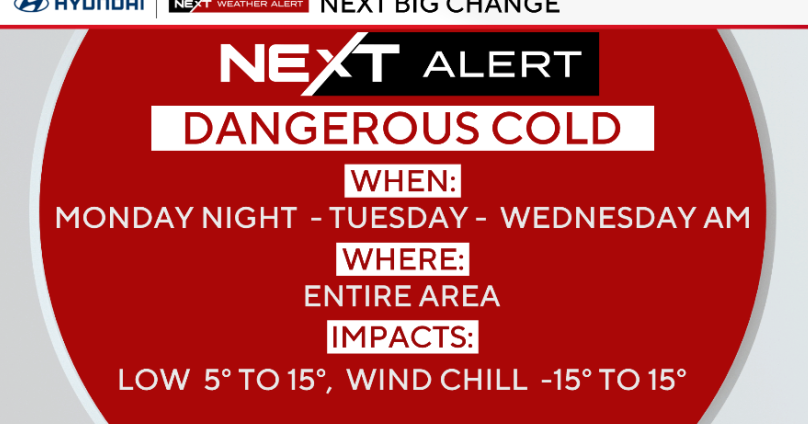Nature up close: Getting rid of the lawn mower (and your lawn, too)
By "Sunday Morning" contributing videographer Judy Lehmberg.
Have you ever thought about why you have a lawn that you have to maintain and mow? We recently watched a grizzly bear and her two cubs at a bison carcass where I finally found the answer to that question.
Now, what in the world does a lawn have to do with a grizzly bear?
If a bear has a carcass and can't eat all of it at one time, it will cover it in grass, dirt, and anything else handy to hide it from other predators so they can return to it when they get hungry again. I don't know if it is very effective or not – most of the bears I've watched do a really poor job of covering their carcasses. But not one particular grizzly in Yellowstone known as the Hayden Valley Sow.
She and her two new cubs found a dead female bison that had been hit by a car in Hayden Valley. There was enough meat to last her several days, if she could keep the other bears (as well as the ravens, eagles, magpies, coyotes and wolves) from finding it. The first day she found it, she ate her fill and then did a more thorough job of covering that carcass than any bear I've ever seen. She methodically circled the carcass scraping grass with her powerful front paws and claws onto the carcass. By the time she finished, the remains looked like a small hill of grass surrounded by a circle of freshly-cut lawn. We had to look closely to even know there was a carcass because the only thing she didn't cover was one horn, although the smell made it very obvious that something dead was in the vicinity. [The best comment I heard that day waiting for the bears to come in was, "That smell is the smell of a good photograph!"]
That got me to thinking about lawns. I realized that that bear had the only useful purpose for creating a lawn ever. We humans make lots of lawns, but why? We become slaves to them; manicuring them, watering, fertilizing, applying pesticides and weed killer. Why do we do that? Because most of us think we are supposed to do it?
Lawns were "invented" by the English elite. They were a symbol of wealth. Wealthy people could afford to have land that served no agricultural purpose and had to be maintained by their servants before the lawn mower was invented. The idea spread to the U.S., and now many of us don't question why we should maintain something with no real purpose that is actually damaging to our environment in many ways. We just do it.
Lawns are a monoculture. Only one species grows in a lawn: grass. Not grass that is useful for something to eat, but grass we just look at.
Americans use over 80,000,000 pounds of pesticide each year on their lawns. We use more herbicides on our lawns than farmers use to grow crops. We buy lawn mowers, weed-eaters, and trimmers for no really useful purpose, and that equipment requires a lot of resources to manufacture. We spill about 17 million gallons of gasoline while re-fueling lawn care equipment, not to mention the amount of greenhouse gases we produce while running that equipment. The pesticides and fertilizers we use also require fossil fuels for manufacturing, application and distribution, which also contributes to global warming. Between 50% and 70% of residential water is used to grow the 49,000 square miles of lawn in the U.S. That translates into 200 gallons of fresh water per person per day to water our lawns. That water and land could be used by wild animals to survive.
And then there are the health risks. Why do so many of us ignore the dangers of pesticides and herbicides to ourselves, our kids and our environment? Depending on the chemicals used, lawn products can be carcinogenic, cause birth defects or adverse reproductive effects. Some are neurotoxins, some damage both the liver and kidneys, and some are endocrine disrupters.
Thankfully there are alternatives that have been growing in popularity. The easiest alternative is just leave your yard alone and see what happens. Native plants can eventually become established, although they may be not the plants you want. If you don't want to wait that long, totally remove your lawn and replace it with xeriscape plants (those needing little to no irrigation) if you live in a dry area, or a pretty little prairie if you live in most of the east, the Midwest and the northwest parts of the U.S. There are now numerous sources for native plants that will grow where you live – they can be found both locally in native plant greenhouses and nationally through catalogs that specialize in native grasses and wildflowers.
Once you have established native plants and have your own personal little prairie, you can add plants such as milkweed, which benefits monarch butterflies, maybe some trumpet creeper or other suitable flowers to attract hummingbirds, and any native plant with flowers to attract bees. And then you can ditch your lawn mower, stop adding toxic pesticides and herbicides to our environment, and do something useful with your time other than mowing the grass, even if it is just sitting there admiring your wildflowers.
We have five-and-a-half acres surrounding our house. Anything that wants to grow there does, except the non-natives. I kill any Chinese tallow or privet I find. We do have some non-native morning glorying vines. I get rid of the ones that are causing problems to the native trees, but I have to admit I like the flowers and don't mind if a few survive. Over the years we've added a number of native species, such as maples, redbuds, cypress trees, bay trees, mulberries, coral honeysuckle, passionflowers and Texas verbena.
Next time you are thinking of getting out the lawn mower, consider the alternative. Buy a mix of native wildflower seeds selected for your environment and replace your lawn with them. Get rid of the lawn mower, the herbicides and the water sprinkler and realize you have freed yourself from a job that is a complete waste of time.
It makes sense for a grizzly bear to create a temporary lawn, but it is counterproductive for humans.
Some sources for native wildflower and grass seeds, as well as plants, can be found at the University of Texas Lady Bird Johnson Wildflower Center. Go to wildflower.org/suppliers and type in your zip code to find sources close to you.
See also:
- Healthy Yards
- Recreate a prairie (wildflower.org)
- Planting a future for Monarch butterflies ("Sunday Morning," 3/08/15)
- How to grow a wild patch (The Wildlife Trusts)
- LessLawn.com
Judy Lehmberg is a former college biology teacher who now shoots nature videos.
For more:
- Judy Lehmberg (Official site)
- Judy Lehmberg's YouTube Channel
To watch extended "Sunday Morning" Nature videos click here!








